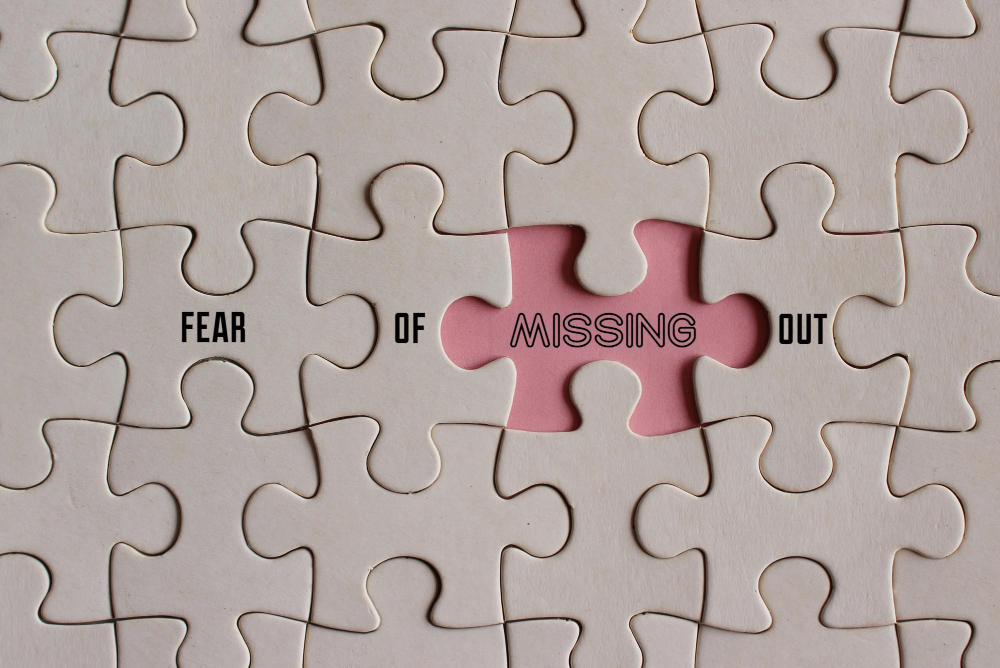There is no denying the ever-present nature of digital products and the media creating a sense of urgency and desire to stay relevant. As a product manager, you could face too many innovative products that make you feel lost in the swirl. Here is a quick statistic, according to Clayton Christensen, a professor at Harvard Business School, nearly 30,000 new products are introduced each year, and 95% of them fail. Ouch!
Anything that limits your ability to make good product decisions can threaten your business success. Tackling FOMO, therefore, becomes a critical business imperative. Before overcoming this marketing bias, we must first understand explore what it is, the influence on product managers. We’ll also look at examples of industries that have created products due to FOMO and failed. We will offer some tips on how to avoid the pitfalls of FOMO bias.
The fear of missing out, commonly called FOMO, is a powerful emotion that can be a double-edged sword leading to short-sighted decisions. While product managers may never agree with the FOMO phrase, seeing competitors succeed with certain digital products can be tempting to think you can replicate their success. This can distort the understanding of customer needs and preferences and prioritize short-term fads over long-term value creation.
FOMO marketing bias leverages innate psychological tendencies to make decisions based on the fear of being left behind or wanting to be part of a trend. This bias can lead to product managers rushing to create market products that may fail.
When FOMO becomes the driving force behind product development, you become focused on the competition, leading to reactive decision-making rather than staying true to your product vision. It can lead you to rush into development, resulting in products that do not meet the needs of your target market.
In the tech industry, several companies rush to release new features or products in response to competitor announcements, only to find that these additions do not align with the core value proposition or effectively meet customer needs.
In 2013, all the big tech companies were shooting towards wearables – particularly smartwatches. For many, they are the next step towards our tech-dependent lives, but wristwear wasn’t where it was for Google. They introduced Google Glass – a wearable eye device that lets users interact with the world around them hands-free.
In 2015, Google Glass was a failure. It was only effective in specific scenarios for medical and professional purposes. The product was a victim of FOMO marketing bias, as Google feared that their competitors would leave them behind if they didn’t release a wearable device. They rushed the product to market without fully considering the needs of their target market.
FOMO can lead product managers to skip essential steps in product discovery, thereby overlooking crucial information about your target audience’s preferences and pain points. A product launched based on a temporary trend may lose popularity.
Apple is an excellent example of a company that has been able to leverage the popularity of a trend and still develop products that are sustainable in the long term. Apple believes in maximum viable products over minimum viable products. This gives them room for innovative products that go through a lot of comprehensive market research and customer discovery.
Apple was among the first companies to launch a smartwatch. They prioritized properly the product discovery process to understand what people needed in a smartwatch. As a result, the Apple Watch is a success, and is still one of the most popular smartwatches on the market, serving people from all professions – athletes, medical professionals, professors, and even teenagers. Apple’s success is a testament to focusing on long-term sustainability and creating products aligned with the customer’s needs.
Pitfalls of FOMO-Driven Product Decisions :
- Wasted resources: FOMO-driven product decisions can waste time, money, and human resources. These decisions are made without careful planning, leading to products that are not successful.
- Damage to brand reputation: FOMO-driven product decisions often lead to products that customers do not like, which can create a negative perception of the company.
- Loss of customer trust: Damage to brand reputation could equal a loss of confidence in the company and a decrease in customer loyalty.
- Short-term gains vs long-term sustainability: Pursuing short-term gains and quick wins could drive FOMO-driven product decisions. However, this approach can compromise the long-term sustainability of a product, neglecting a solid foundation for the product’s growth and longevity.
- Lack of product-market fit and customer adoption: When product managers release a product based on the fear of missing out on a trend, they may not thoroughly validate whether the product solves a significant problem for their target market. This lack of product-market fit can lead to low customer adoption and product failure.
- Overlooking competition and differentiation: FOMO-driven product decisions often stem from a desire to keep up with competitors or to mimic successful products in the market. Failing to consider the competitive landscape and differentiate the product can lead to a crowded market space with limited opportunities for success.
Navigating FOMO's Influence as a Product Manager :
Tackling bias will lead to better, more informed decision-making, resulting in a much better and more inclusive product.
The best way to prevent FOMO bias from influencing your product decision is
Awareness: You cannot reduce bias if you don’t acknowledge they exist in the first place.
Learn: Learn how the FOMO bias may affect you or your team. Learn how it affects your customers too. Knowledge leads to greater awareness and opportunities to take positive action.
Objectives: Don’t let short-term product objectives eclipse long-term company objectives.
Perspective: Broaden Customer and team feedback to experience different points of view. According to Harvard Business Review, teams and companies that are diverse in terms of composition are 70% more likely to capture a new market than firms that are not diverse.
We provide some more detailed ways to tackle FOMO:
Conducting Objective Market Research and Analysis: Remember that not all trends are created equal; some are simply fads that will quickly die out, while others have the potential to be long-lasting. It’s so crucial to conduct objective market research and analysis. This will help you understand the market landscape and identify the trends likely to be sustainable in the long term.
Building a Strong Product Vision and Strategy: Your product vision should also be based on a deep understanding of the market and your customers’ needs. Your product strategy should be a detailed plan for how you will achieve your product vision and should include a roadmap for product development.
Balancing Customer Needs with Trend Considerations: The best way to balance Customer needs with trend considerations is to focus on long-term sustainability. This means developing products that meet your Customer’s needs and are relevant to the latest trends.
Testing and Iterating to Validate Product Value: Continuously test and iterate to validate product value, get customer feedback early and often, and make changes to the product based on that feedback. By testing and iterating, you can ensure that your products meet customers’ needs and provide actual value.
Leveraging data and analytics to inform decision-making: Product managers should collect customer behaviour, market trends, and competitor activity data. This data can be used to make product development, marketing, and pricing decisions.
Cultivating a Healthy Skepticism Towards Marketing Messages: This involves approaching marketing claims and tactics with a critical mindset and not succumbing to the pressure of immediate action. This allows for a more balanced and objective evaluation of marketing messages, leading to strategies that align with the company’s long-term success and the target market’s genuine needs.
At Terrific Studio, we help your product discovery processes navigate the FOMO bias, by identifying new markets, understanding customer needs, and generating unique ideas that value diverse perspectives.
What sets us apart is our delivery of this service as a team, which allows us to go beyond the surface-level understanding of customer needs. We delve deep into market research, conduct thorough user interviews, and leverage cutting-edge data analytics to uncover insights that drive meaningful product development.
By prioritizing long-term value creation over short-term FOMO (Fear of Missing Out) goals, we ensure that the products we help discover have a lasting impact on the market. We take the time to evaluate opportunities thoroughly and align them with your business objectives, ensuring that each product has a solid foundation for success. Book A Free Call with us today to supercharge your product discovery process, unlock untapped potential and test existing markets.








